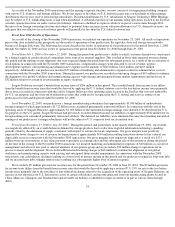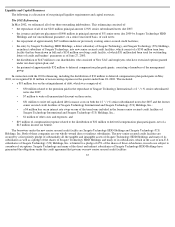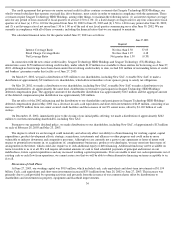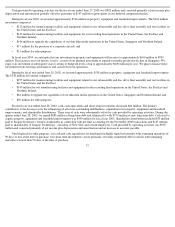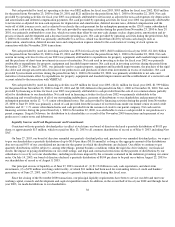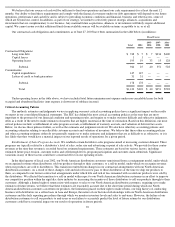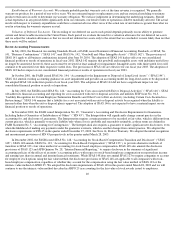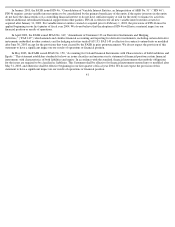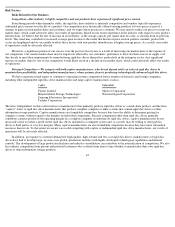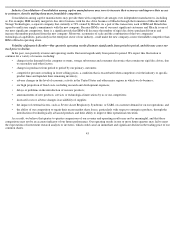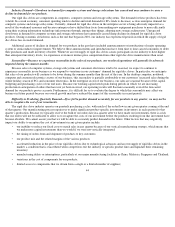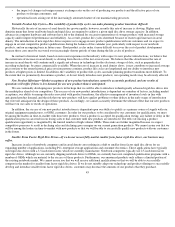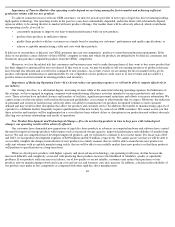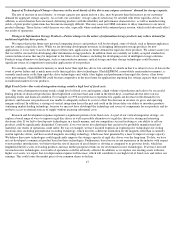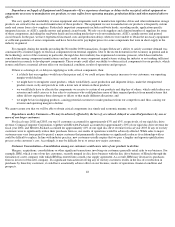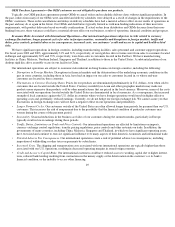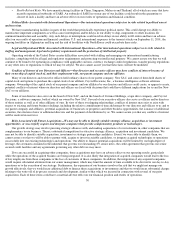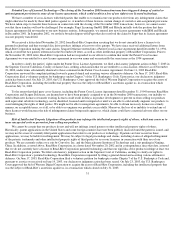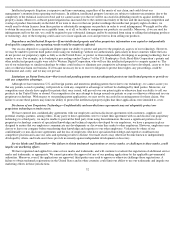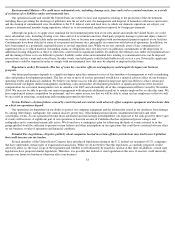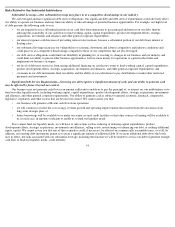Seagate 2002 Annual Report Download - page 49
Download and view the complete annual report
Please find page 49 of the 2002 Seagate annual report below. You can navigate through the pages in the report by either clicking on the pages listed below, or by using the keyword search tool below to find specific information within the annual report.
Industry Demand—Slowdown in demand for computer systems and storage subsystems has caused and may continue to cause a
decline in demand for our products.
Our rigid disc drives are components in computers, computer systems and storage subsystems. The demand for these products has been
volatile. In a weak economy, consumer spending tends to decline and retail demand for PCs tends to decrease, as does enterprise demand for
computer systems and storage subsystems. Currently, demand for rigid disc drives in the enterprise sector is being adversely impacted as a
result of the weakened economy and because enterprises have shifted their focus from making new equipment purchases to more efficiently
using their existing information technology infrastructure through, among other things, adopting new storage architectures. Unexpected
slowdowns in demand for computer systems and storage subsystems have generally caused sharp declines in demand for rigid disc drive
products. During economic slowdowns such as the one that began in 2001, our industry has experienced periods in which the supply of rigid
disc drives has exceeded demand.
Additional causes of declines in demand for our products in the past have included announcements or introductions of major operating
system or semiconductor improvements. We believe these announcements and introductions have from time to time caused consumers to defer
their purchases and made inventory obsolete. Whenever an oversupply of rigid disc drives causes participants in our industry to have higher
than anticipated inventory levels, we experience even more intense price competition from other rigid disc drive manufacturers than usual.
Seasonality—Because we experience seasonality in the sales of our products, our results of operations will generally be adversely
impacted during the summer months.
Because sales of computer systems, storage subsystems and consumer electronics tend to be seasonal, we expect to continue to
experience seasonality in our business as we respond to variations in our customers’ demand for rigid disc drives. In particular, we anticipate
that sales of our products will continue to be lower during the summer months than the rest of the year. In the desktop computer, notebook
computer and consumer electronics sectors of our business, this seasonality is partially attributable to our customers’ increased sales during the
winter holiday season of PCs and consumer electronics. In the enterprise sector of our business, our sales are seasonal because of the capital
budgeting and purchasing cycles of our end users. Because our working capital needs peak during periods in which we are increasing
production in anticipation of orders that have not yet been received, our operating results will fluctuate seasonally even if the forecasted
demand for our products proves accurate. Furthermore, it is difficult for us to evaluate the degree to which this seasonality may affect our
business in future periods because our overall growth may have reduced the impact of this seasonality in recent periods.
Difficulty in Predicting Quarterly Demand—If we fail to predict demand accurately for our products in any quarter, we may not be
able to recapture the cost of our investments.
The rigid disc drive industry operates on quarterly purchasing cycles, with much of the order flow in any given quarter coming at the end
of that quarter. Our manufacturing process requires us to make significant product-specific investments in inventory in each quarter for that
quarter’s production. Because we typically receive the bulk of our orders late in a quarter after we have made our investments, there is a risk
that our orders will not be sufficient to allow us to recapture the costs of our investment before the products resulting from that investment have
become obsolete. We cannot assure you that we will be able to accurately predict demand in the future. Other factors that may negatively
impact our ability to recapture the cost of investments in any given quarter include:
•
our inability to reduce our fixed costs to match sales in any quarter because of our vertical manufacturing strategy, which means that
we make more capital investments than we would if we were not vertically integrated;
•
the timing of orders from and shipment of products to key customers;
•
our product mix and the related margins of the various products;
•
accelerated reduction in the price of our rigid disc drives due to technological advances and an oversupply of rigid disc drives in the
market, a condition that is exacerbated when competitors exit the industry or specific product lines and liquidate their remaining
inventory;
•
manufacturing delays or interruptions, particularly at our major manufacturing facilities in China, Malaysia, Singapore and Thailand;
•
variations in the cost of components for our products;
44
•
limited access to components that we obtain from a single or a limited number of suppliers;


